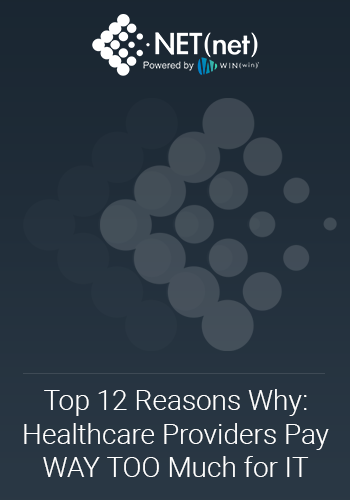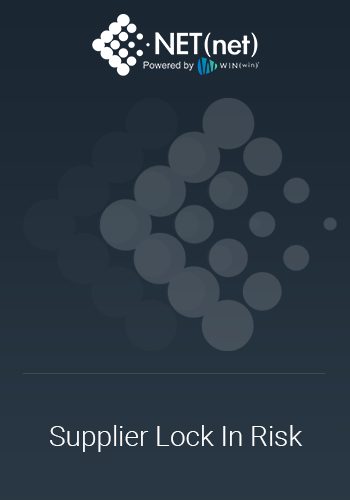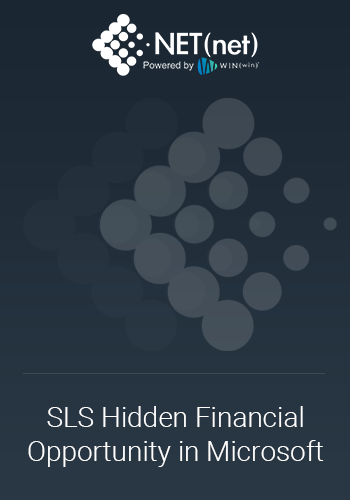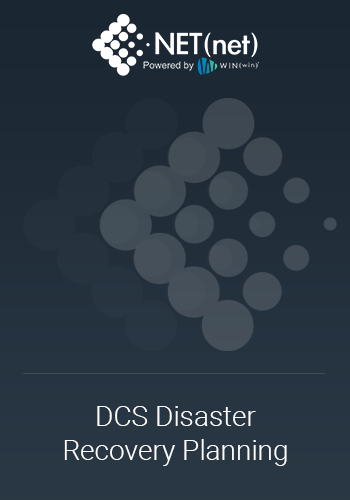Preface
Nearly all clients are seeking greater prosperity in 2024.
While client organizations are still focused on cost reductions to meet the challenges of their new economic and market realities, the pent-up demands of the business are increasingly calling for innovation, automation, and organizational performance improvement.
Digital Transformation has emerged as the #1 Way to Boost Performance and Savings concurrently. Client organizations that are digitally transforming are harvesting greater value by:
- Automating tasks (RPA) to streamline efficiencies
- Unlocking data insights (ML) for better organizational (AI) decision-making
- Empowering flexible (Cloud) solutions for more cost-effective scaling
This drives greater innovation, improved organizational performance, and significant cost savings ranging from 25-30% (depending on industry, scope of transformation, maturity of transformation, and the methodology and execution) while at the same time, lowering risk by diversifying and improving the technology supply chain.
NET(net) is the #1 IT Cost and Value Optimization Provider. In the last 20+ years, NET(net) has shaped over $2 Trillion of investment, captured well over $400 Billion of incremental value for our clients and partners, and has an 85% probability of helping you save between 13-53% on your existing and planned IT costs. Our performance numbers are simply unmatched.
Citrix: From Humble Beginnings to VDI Leader
Citrix's story starts in the 1980s, focusing on remote application delivery. Back then, most organizations used ‘dumb terminals’, and even where personal computers were used, they weren't as powerful as they are today, so companies needed a way to deliver applications centrally to less-capable devices. Citrix's solution, known as Independent Computing Architecture (ICA), filled that gap.
The Rise to VDI Prominence:
Fast forward to the late 1990s and early 2000s. The rise of desktop virtualization (VDI) presented a new opportunity. VDI allows users to access entire virtual desktops, not just applications, from any device. Citrix, with its experience in remote access, was well positioned to capitalize on this trend.
Here are some key factors that contributed to Citrix's dominance in the VDI space:
- Early mover advantage: Citrix was one of the first companies to offer a comprehensive VDI solution, giving them a head start in establishing themselves as a leader.
- Strong product offerings: Citrix's VDI products (like XenDesktop and XenApp) were known for their reliability, security, and ease of management.
- Focus on user experience: Citrix prioritized delivering a smooth and familiar user experience for virtual desktops, making it easier for businesses to adopt the technology.
- Partnerships: Citrix established strong partnerships with leading hardware, software, and services suppliers, creating a robust ecosystem for VDI deployments.
Maintaining the Lead:
Citrix continued to innovate, adding features and functionalities to its VDI offerings. It also embraced the cloud, offering cloud-based VDI solutions like XenDesktop Service (later Citrix Virtual Apps and Desktops Service). This allowed businesses to leverage the scalability and flexibility of the cloud for their VDI needs.
Citrix Ownership, Mergers, and Potential Price Hikes
Citrix's ownership structure underwent a significant shift in 2021. Here's a breakdown of the key events:
- Acquisition by Vista Equity Partners and Evergreen Coast Capital: In January 2022, a consortium led by private equity firm Vista Equity Partners and Evergreen Coast Capital finalized the acquisition of Citrix for $16.5 billion. This marked a shift from Citrix being a publicly traded company to a private one. Together with TIBCO, NetScaler, Jaspersoft, IBI, and ShareFile, Citrix is now part of a consortium called the Cloud Software Group.
- Tom Krause at the Helm: Following the acquisition, Tom Krause, the former president of Broadcom's software group, was appointed CEO of the combined Citrix-TIBCO entity in 2022. This appointment raised concerns among some due to the recent (and wildly disruptive) Broadcom acquisition of VMware, which some saw as using its market dominance to prioritize short-term gains over long-term product development and customer service. Krause is credited as the architect of the Broadcom acquisition of VMware.
Read: Top 5 Concerns & Countermeasures Regarding Broadcom’s Acquisition of VMware
- Citrix and TIBCO Merger: As part of the acquisition by Vista and Elliott, Citrix was merged with TIBCO Software, another company acquired by Vista in 2014. TIBCO is known for its enterprise application integration (EAI) and API management solutions, but many client organizations are experiencing high and escalating costs associated with these products.
Read: Top 5 Ways to Slash Your TIBCO Costs (without sacrificing value).
The Underlying Reason for Price Increases? Leveraging Market Position
Citrix, like many technology suppliers, has been shifting towards a subscription-based model for the last several years. However, it was just recently announced (in March, 2023), that they would be retiring perpetual license renewals (save a few exceptions for customers under 250 seats where there are no subscription options due to minimum deployment thresholds*). While perpetual licenses are still valid until their expiration, new deployments will be subscription based. Customers with under 1000 seats have the option to retain their perpetual licenses and can add to those deployments with minimal changes for now. The ownership and merger moves may contribute to the potential explanation for Citrix's recent subscription model changes and price hikes, particularly for smaller businesses (SMBs). Here's how:
- Private Equity Ownership: Private equity firms like Vista understandably focus on maximizing shareholder value within a specific timeframe. This can incentivize cost-cutting measures and potentially higher prices to improve short-term financial performance.
- Krause's Background: Tom Krause's association with Broadcom's acquisition of VMware, which many viewed as predatory, predicated on market dominance, favoring the prioritizing of short-term gains, might suggest a similar approach at Citrix, potentially leading to cost increases for customers. While it’s important to note that Krause left Broadcom to become the CEO of Citrix/Tibco before the VMware integration was complete, he played a key role in negotiating Broadcom’s acquisition of the virtualization giant and is credited with the plan to integrate VMware into Broadcom’s software group,
- TIBCO's Existing Cost Structure: As TIBCO's solutions are known for being expensive, merging them with Citrix could influence Citrix's overall pricing strategy, potentially leading to higher costs across the board.
- Market Dominance (Historically): Citrix has historically been a leader in the VDI space. With a potentially captive customer base, the company might be attempting to leverage its market position to extract higher prices, especially during the transition to a subscription model.
It's important to note that this is a potential explanation, and other factors could be at play. However, the combination of these events raises concerns about Citrix's long-term commitment to customer satisfaction and affordability, particularly for SMBs.
* Citrix customers with less than 250 licenses can still subscribe to Citrix Private Cloud where there is no minimum requirement.
The Current Landscape and Potential Shift:
Citrix's shift towards a subscription-based licensing model with fewer options and potentially exponentially higher costs, especially for small and medium sized businesses (SMBs), is causing unprecedented friction with its customers. This has led some to question Citrix's commitment to its customer base as they openly wonder if Citrix is simply prioritizing larger enterprises at the expense of its business with SMBs. Citrix reasons that the bundling a) simplifies its offerings b) enhances its functionality c) is designed to displace other technologies, and d) ultimately saves customers money.
Whether Citrix can maintain its leadership position in the VDI space remains to be seen. The success of alternative solutions and customer response to these licensing changes will play a big role in shaping the future of the VDI landscape.
Citrix's Licensing Model Changes and the Impact on Smaller Companies
Citrix has been overhauling its licensing model, shifting away from perpetual licenses towards a subscription-based model. This change has caused significant disruption, particularly for smaller companies (SMBs). Here's a breakdown of the changes and their negative impacts:
Changes to the Licensing Model:
- Subscription focus: Citrix is phasing out perpetual licenses, which previously allowed customers to buy the software outright and pay for the ongoing annual maintenance and support services independently. Now, the emphasis is on subscriptions, where customers pay a recurring fee for access to the software and features as well as for support. This has the effect of forcing customers to ‘rebuy’ the underlying license that they already paid for, which is partly the reason for the increase in cost.
- Reduced options: Previously, Citrix offered a variety of licensing options based on user/device count and features. Now, there are fewer options, with some features only available in higher subscription tiers. This forces some customers to upgrade to get access to the features they previously had. Forced upgrades are another reason why customers are paying more. The opportunity may exist to experience a *lower* overall total cost of ownership (TCO), but that will require technology stack consolidation and a movement of more wallet-share away from other suppliers to Citrix. Client organizations generally prefer to decide this on their own, based on merit and favorable attributes of the partnership, and not be forced into this by responding to drastic changes to solution components and pricing.
- Minimum seat requirements: Citrix has implemented a minimum user/device requirement (often 250) for purchasing certain subscriptions. This either excludes smaller companies who don't meet the threshold or forces them to buy surplus (unused) capacity to gain access to the features they previously had and continue to need.
- End of automatic renewals: Automatic renewals for existing perpetual licenses are no longer available (which could be a good thing or a bad thing). Customers will now need to actively reach out to Citrix or a partner for renewal quotes if they are not being actively contacted by their account representatives. This is where the implications of these changes are being felt – in real time – by customers who are unable to get quotes, who are not getting timely responses, and who are now potentially facing huge and unplanned spikes in costs and/or a significant loss in value. Having to deal with all this in an emergency mode or face significant potential ramifications only adds to the stress.
- Price hikes: Many customers have reported very significant price increases, particularly when switching from perpetual licenses to subscriptions.
Negative Impact on Smaller Companies:
- Cost concerns: Citrix’s subscription model is significantly more expensive than paying for ongoing maintenance on perpetual licenses, especially for smaller companies with limited IT budgets. The newly introduced additional restrictions and the lack of choice in licensing options further limits customers’ ability to find cost-effective solutions.
- Complexity and lack of transparency: The new model is more complex, making it difficult for smaller companies with limited IT resources to understand pricing and choose the right subscriptions. The lack of readily available quotes adds to the frustration and often leaves customers with no time to react, forcing them to pay what they have characterized as ‘extortion prices’ without a reasonable timeframe to evaluate and implement reasonable actions.
- Exclusion from features: Minimum seat requirements prevent smaller companies from accessing features they might need if they don't meet the user count threshold.
- Increased workload for IT staff: Managing subscriptions and renewals adds to the workload of already stretched IT staff in smaller companies.
- Limited negotiation power: Smaller companies have less leverage to negotiate favorable pricing or terms compared to larger enterprises. Many can’t even get called back.
Overall, these changes seem to indicate a strategic shift in Citrix's focus away from SMBs and towards larger enterprises. Smaller companies are left with fewer options, much higher costs, and a more complex licensing landscape leaving them with hard choices. If they choose the Citrix vision of technology, they will be forced to consider targeted replacements in their technology supply chain away from other suppliers – over to Citrix.
Citrix’s Licensing to Subscription Inferno Leaves Customer Loyalty in Ashes:
Some customers are facing *Massive* cost increases. In one case, a Citrix customer is facing an 800% increase for the same level of service under Citrix's subscription licensing model. Here are the top 5 reasons why Citrix customers are seeing these punitive pricing increases:
- Shift from perpetual to subscription: Customers that previously had perpetual licenses generally paid an upfront fee for the cost of the software and then pay separate annual maintenance fees for access to upgrades and technical support. Under the subscription model, they would be charged a recurring fee based on user/device counts and features. This transition can lead to a significant increase in annual spending, especially if the subscription cost is much higher than the previous maintenance fee. In addition, customers that previously could manage licenses and deployments many times throughout the year as renewals came due, will no longer have that ability as the whole investment will come due annually. This can certainly simplify the financial management of the investment, but it limits the frequency and effectiveness of how client organizations can actively manage their entitlements.
- Increased user/device count: Even if total consumption remains flat, the price could jump if there's been an increase in the number of users or devices accessing the VDI solution. The new model might have different pricing tiers based on user/device count, leading to a sharp price hike if your customer has added more users/devices since their last contract.
- Loss of volume discounts: Previously, customers might have benefited from volume discounts for purchasing multiple licenses. Under the subscription model, such discounts might be less available or structured differently, resulting in a higher overall cost. Generally, customers who are downsizing Citrix estates are losing enterprise discounts entirely. Conversely, customers who are growing are retaining discounts, albeit on higher unit cost items with greater bundling of features (that may or may not be valuable depending on how customers can leverage those feature sets). So, they are still seeing an uplift in most cases.
- Changes in included features: Some features previously included in perpetual licenses are now offered only in higher subscription tiers. To access those features, customers need to upgrade their subscription, leading to a hefty price increase.
- Miscommunication or errors: There's a possibility of miscommunication or errors during the quote process. Customers are advised to double-check quote details to ensure it is reflective of their current usage and needs.
Here's what you can do:
- Request a breakdown of the new quote: Ask Citrix to explain how they arrived at the new pricing, including details on user/device count, features included, and any applicable discounts.
- Negotiate: Emphasize the extenuating circumstances that these changes have causes and how Citrix has thrust this onto its customers with very little time to react, and see if any negotiated concessions can be exchanged to arrive at a better price and/or a lower user/device count to reduce the cost.
- Explore alternatives: If Citrix is unwilling to budge or simply doesn’t respond, investigate alternative VDI solutions (like those mentioned earlier) that might offer a better fit for your budget and usage needs.
Competitive Alternatives:
Here are the Top 5 VDI alternatives to Citrix:
- Microsoft Azure Virtual Desktop (AVD): For organizations already standardized on the Microsoft technology stack and invested in the Microsoft ecosystem, AVD offers scalability, security, and a familiar user experience.
- Amazon WorkSpaces: A cloud-based VDI solution from AWS that offers ease of deployment, scalability, and pay-as-you-go pricing.
- VMware Horizon: Another well-established solution, known for its integration with VMware vSphere hypervisor and strong management capabilities.
- Ericom AccessNow: Known for its focus on security, Ericom AccessNow offers strong multi-factor authentication and session recording capabilities.
- Parallels RAS: A cost-effective solution that provides secure remote access to desktops and applications. Well-suited for organizations with mixed Windows and macOS environments.
Citrix's licensing shift will likely have significant ripple effects on the VDI market for some time to come. Established competitors like Microsoft Azure Virtual Desktop (AVD), Amazon WorkSpaces, and VMware Horizon may see this as an opportunity to poach disgruntled Citrix customers. We can expect these players to offer more attractive pricing models, potentially including free trials or tiered subscription plans that cater to smaller businesses. Additionally, these companies might invest more heavily in product development and marketing to highlight their strengths and differentiate themselves from Citrix. This increased competition could ultimately benefit end-users by driving innovation, improved feature sets, and potentially even lower costs in the VDI space.
Choosing the best VDI alternative depends on your specific needs and priorities. Consider factors like budget, existing infrastructure, security requirements, and user needs among other considerations.
Call to Action
NET(net) can help you maximize your savings and value on all your IT spend categories, including those for VDI, so Act Now.
About the Author
Steven C. Zolman is a leading expert in technology investment optimization and the founder, owner, and executive chairman of NET(net), Inc., the world's leading technology investment optimization firm. With over 30 years of industry experience, Mr. Zolman has helped client organizations of all sizes maximize the value of their technology investments by minimizing cost and risk and maximizing the realization of value and benefit.
About NET(net)
Founded in 2002, NET(net) is the world’s leading IT Investment Optimization firm, helping clients find, get, and keep more economic and strategic value in their technology supply chains. Over the last 20 years, NET(net) has influenced trillions of investment, captured hundreds of billions of value, and has helped clients cost and value optimize all major areas of IT Spend, including XaaS, Cloud, Hardware, Software, Services, Healthcare, Outsourcing, Infrastructure, and Telecommunications, among others. NET(net) has the experience you want, demonstrates the expertise that you need, and delivers the performance you demand and deserve. Contact us at info@netnetweb.com, visit us online at www.netnetweb.com, or call us at +1 (616) 546-3100 to see if we can help you capture more value in your IT investments, agreements, deployments, and relationships.
NET(net)’s Website/Blogs/Articles and other content is subject to NET(net)’s legal terms, offered for general information purposes only, and does not constitute legal advice. While NET(net) may offer views and opinions regarding the subject matter, such views and opinions are those of the content authors, are not necessarily reflective of the views of the company and are not intended to malign or disparage any other company or other individual or group.

















